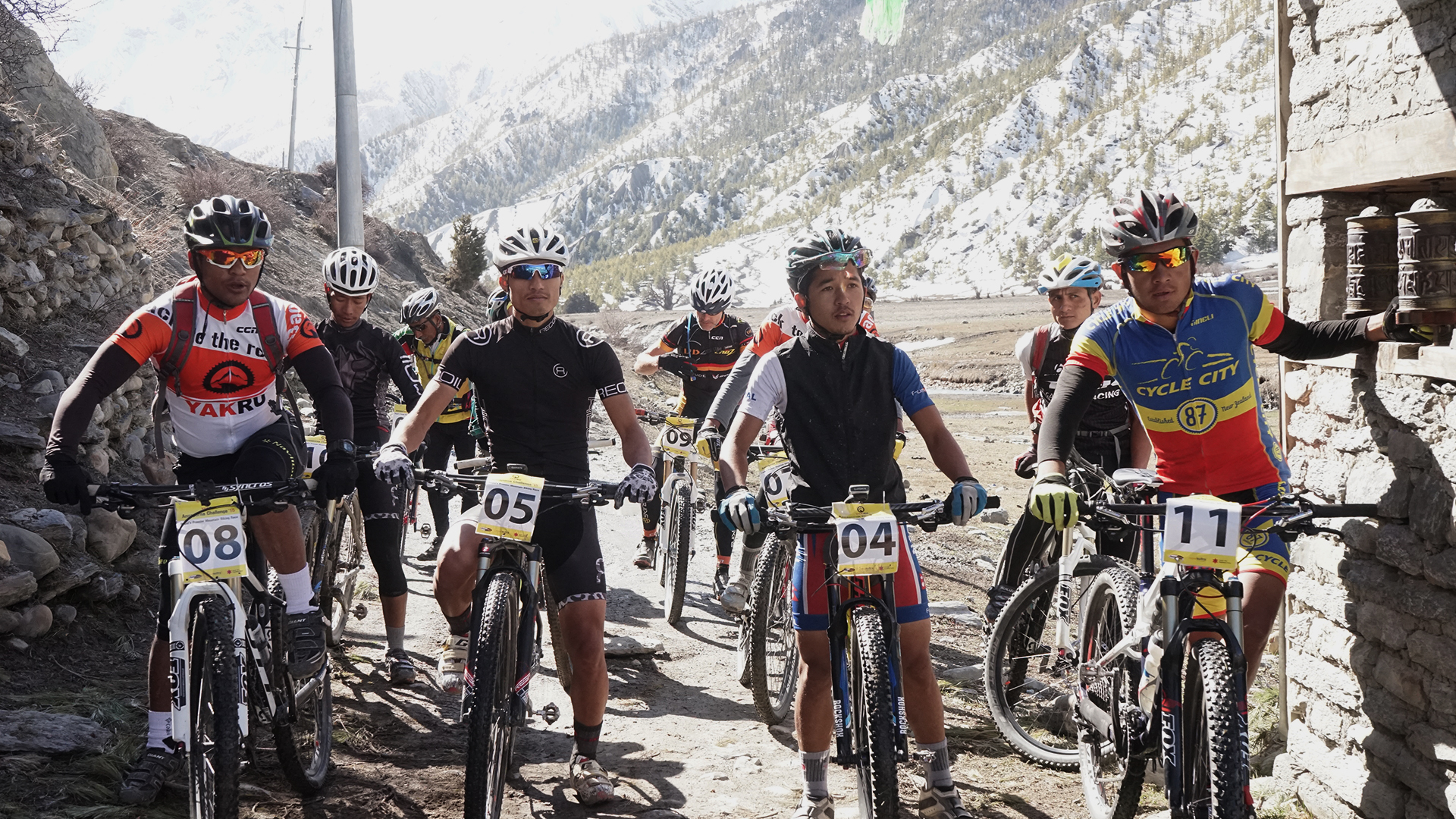
Thin Air Competition – Conditioning for Exertion at Altitude
If you have followed us this far into our series of training/preparation articles, chances are you have already signed up for the Yak Ru, or are otherwise intent on going on a trip or bike ride with similar scope in terms of extreme altitude and conditions.
The recent tragic events that befell the Annapurna region and the surrounding high country – a cyclone-triggered weather system that triggered extreme cold temperatures, blizzards, rainstorms, and avalanches – should serve to drive home the sobering reality of being prepared physically and mentally for the beautiful but uncompromising mountain environment – as hikers, mountain bikers, and competitors.
Even before factoring in the challenges of cold, alpine terrain, poor visibility, or high winds, high altitudes can be dangerous to the untrained individual racing against time (or for that matter, for survival). Simply put: as altitude increases, the less air pressure there is, and the less oxygen there is for the body to consume; the human cardio-respiratory system then has to work harder and harder to maintain organ and cerebral functions.
Yak Ru Riders in Upper Mustang PassOxygen saturation in the bloodstream, or ‘sats’ in mountaineering lingo, is typically around 95-100% at sea level. At altitude – which can be as ‘low’ as 2000m above sea level (ASL) – some individuals can experience the beginnings of hypoxemia (abnormally low blood oxygen saturation), where sats drop below 90%, and breathing starts to require more effort. At heavy exertion at this kind of baseline state, sats of 80% or lower are not uncommon – accompanied by elevated perceived exertion, heart rate, breathing, and drops in power output, speed, and time to exhaustion. In the 50-70% range (regardless of exertion level), physical capacity and judgment can be compromised severely, with the individual possibly having their life under threat within a matter of days, if not hours – unless they are moved to an environment with higher oxygen concentrations ASAP.
At 3500m ASL, the oxygen content is two-thirds that found at 0m. This is the altitude of Manang – the rest-stop for the recovery day on the itinerary of the Yak Ru. At Thorong La Pass (5416m ASL – the highest point of the race), the air is thinner still. A medical team attached to the race staff are always on-hand between stages to assess and care for athletes displaying symptoms of acute mountain sickness resulting from prolonged hypoxemia – is a real threat, along with the potentially lethal twin-dangers of pulmonary oedema and cerebral oedema.
How would we guard against such risks? The recommendation would be to undertake altitude conditioning early and consistently in the lead-up to the race. Genetic predisposition plays a significant role, as does the environment you were brought up in (ever wonder why native high country and mountain-dwelling Nepalis who have lived all their lives in these locales can thrive?), but altitude conditioning is trainable. An individual’s blood chemistry can be altered, albeit temporarily, with the gradual introduction of ‘altitude stress,’ allowing for better sats values, more energetic performances, and greater tolerance to fatigue even at high altitude.
Acclimatization is the most commonly adopted method for athletes from the lowlands. Spending a few days at moderate altitudes, and then ascending gradually to a higher locale (and then resting once more, and after that, repeat the process). Adaptation can occur in as little as five days in Nepal or a similar high-altitude location for a healthy individual. This follows the ‘sleep high, train high’ school of thought and is believed to be logistically the most effective way of conditioning. In essence, you are necessarily leading the lifestyle of the local Nepalis for a few days or weeks.
Thin Air Competition – Conditioning for Exertion at AltitudeAnother form of adaptation is intermittent hypoxic training, a system of conditioning whereby some of the athlete’s training sessions are done in a low-oxygen environment. This method of ‘training high’ can be achieved through an altitude chamber that extracts oxygen from the air (thus simulating a higher altitude). Such a facility is available in Singapore at the Altitude Gym (www.altitude.sg). The benefits of going to such a facility are that the sea-level athlete can still enjoy a mix of high-altitude and sea-level training that complements each other. Their bodies are forced to adapt in low-oxygen situations, and subsequently, can exert higher efforts back in ‘normal’ oxygen levels over time.
If it can be afforded, some lowland athletes can opt for setting up a hypoxic tent in their bedrooms where they rest or sleep for the night, while continuing to do their workouts outdoors in a regular way. This is a more costly option but applies the concept of ‘training low, sleeping high,’ which has also shown to be beneficial from the point of allowing the body to rest/recover at altitude, rather than being stressed at altitude.
Being able to move fast up high is not a given. As a lowland dweller, you have to feel the effects of oxygen deprivation first-hand to understand why it is so hard to perform well at altitude for a surprisingly large number of people, even for some natives of Nepal. Consistent, appropriate acclimatization and altitude conditioning go a long way to ensuring that at least mentally, if not physically, you are prepared to subject your physiology to the stress. It must also be noted that unless you are genetically predisposed (as many highland Nepalis are), altitude conditioning is temporary: spend time away from altitude stimulus, and you will revert back to your new state after a while.

